A major restoration and enhancement project concerning six figurative stucco sculptures, originally part of the decoration of the Teatro Farnese, a masterpiece of European Baroque, was presented in Parma this morning. The intervention, started in May 2025 inside the Sala del Trionfo in the Pilotta Monumental Complex, aims not only to recover these severely damaged works, but also to integrate them into a new permanent museum itinerary. The entire project is supported by the Isabel and Balz Baechi Foundation, a Swiss organization, based in Zurich, committed to the protection of European and international cultural heritage.
The sculptures, dating back to 1617 and made by Luca Reti (Laino, c. 1598 - Parma, c. 1660), a Ticino plasticist, represent a valuable decorative ensemble, emblematic of Baroque art, but they are now preserved in fragmentary condition due to the damage suffered during the 1944 bombing.
“The quality of the statues and their provenance, the astonishing Teatro Farnese, have attracted the interest of a munificent international sponsor, to whom our gratitude goes and who is taking charge of a long and delicate intervention,” stresses Stefano L’Occaso, director of the Complesso della Pilotta. “The statues are a heritage of knowledge because of their polymatericity, their complex nature: they are masterpieces of the ephemeral, made with a fragile and refined technique. Straw, ropes, cloths and metal armor make up the framework of these imposing stucco statues, which complemented the imposing architecture and pictorial decorations of the theater. The intervention takes place in the Hall of Triumph and is therefore an ’open construction site’ under the eyes of our visitors.”

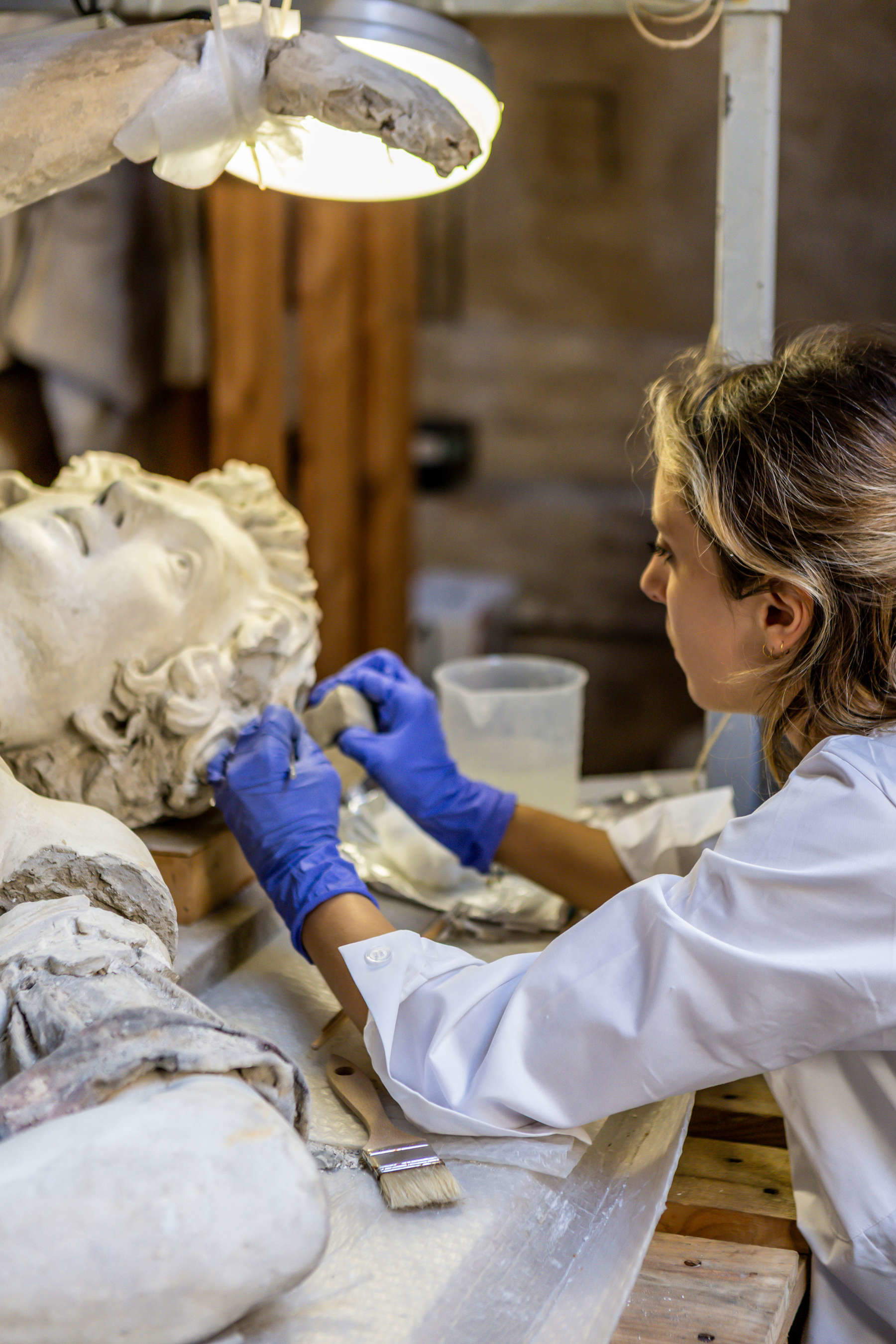
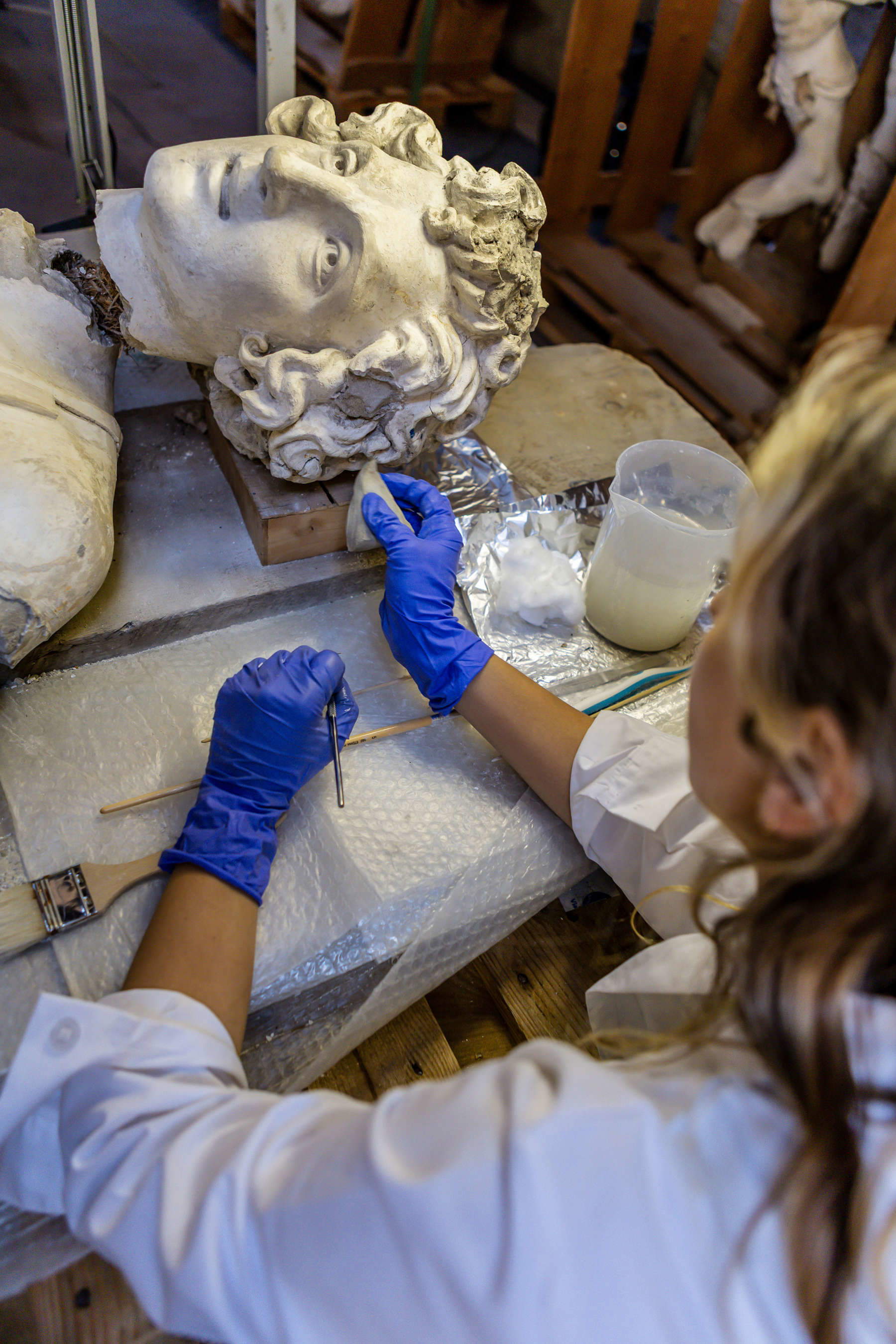
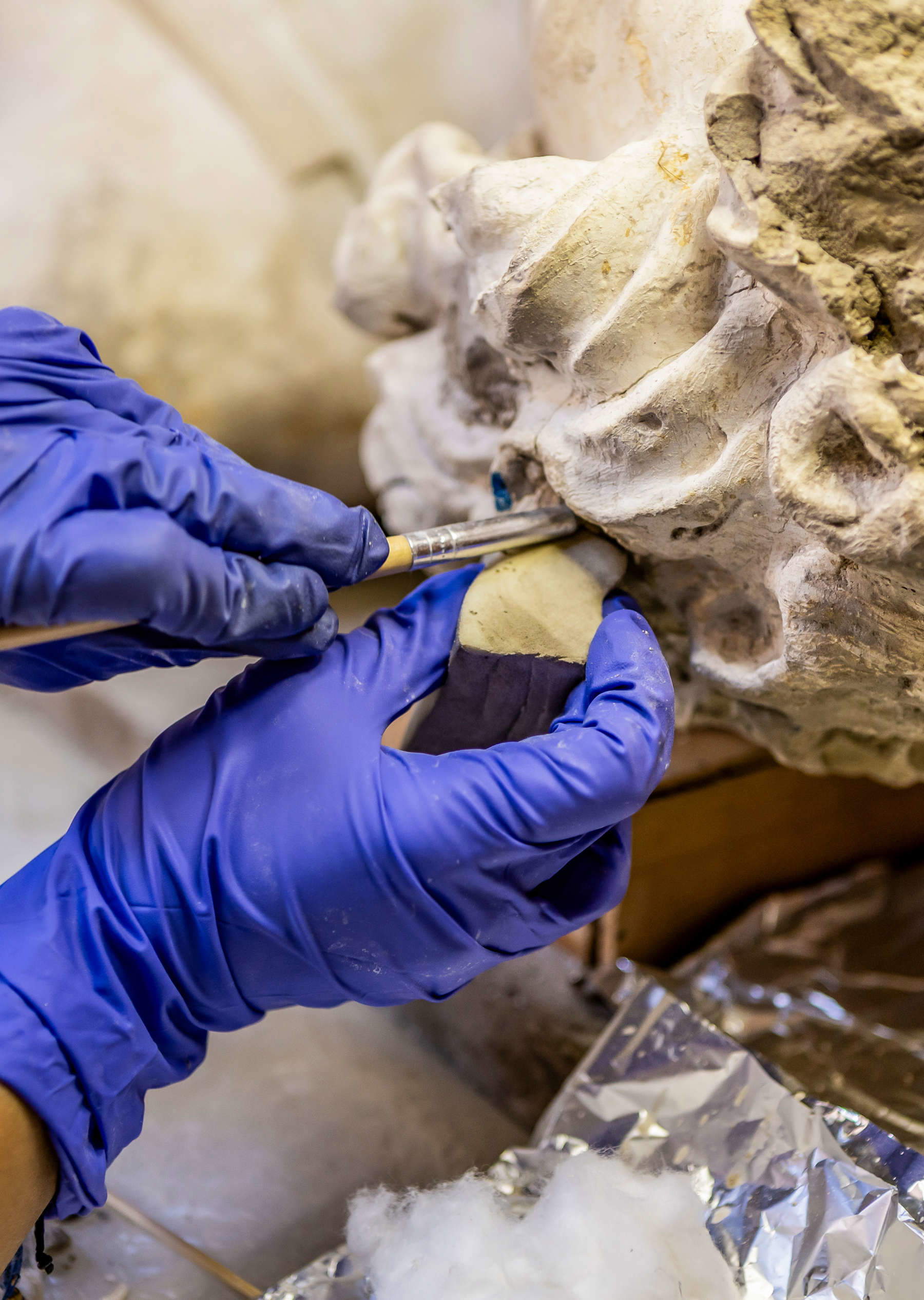
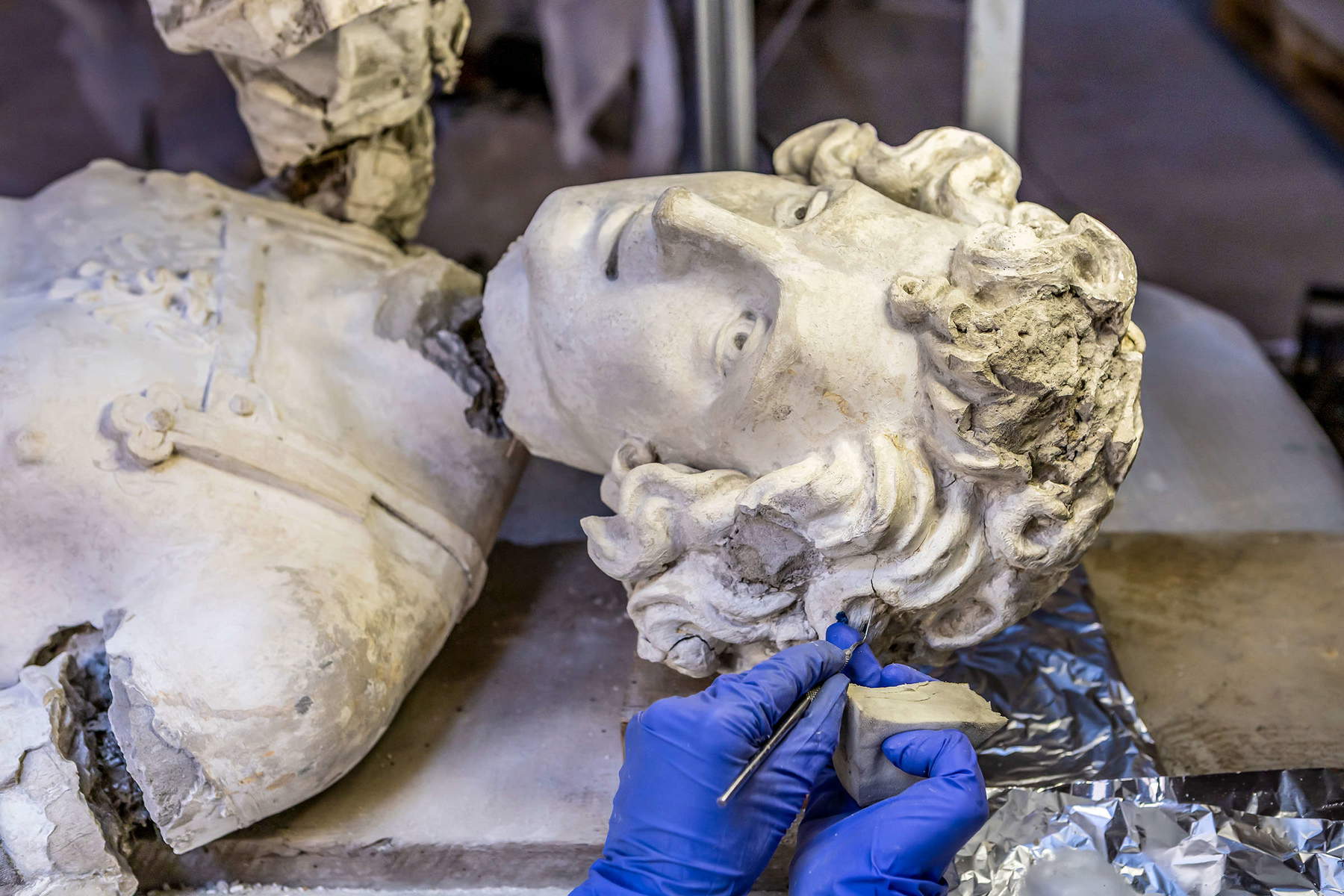

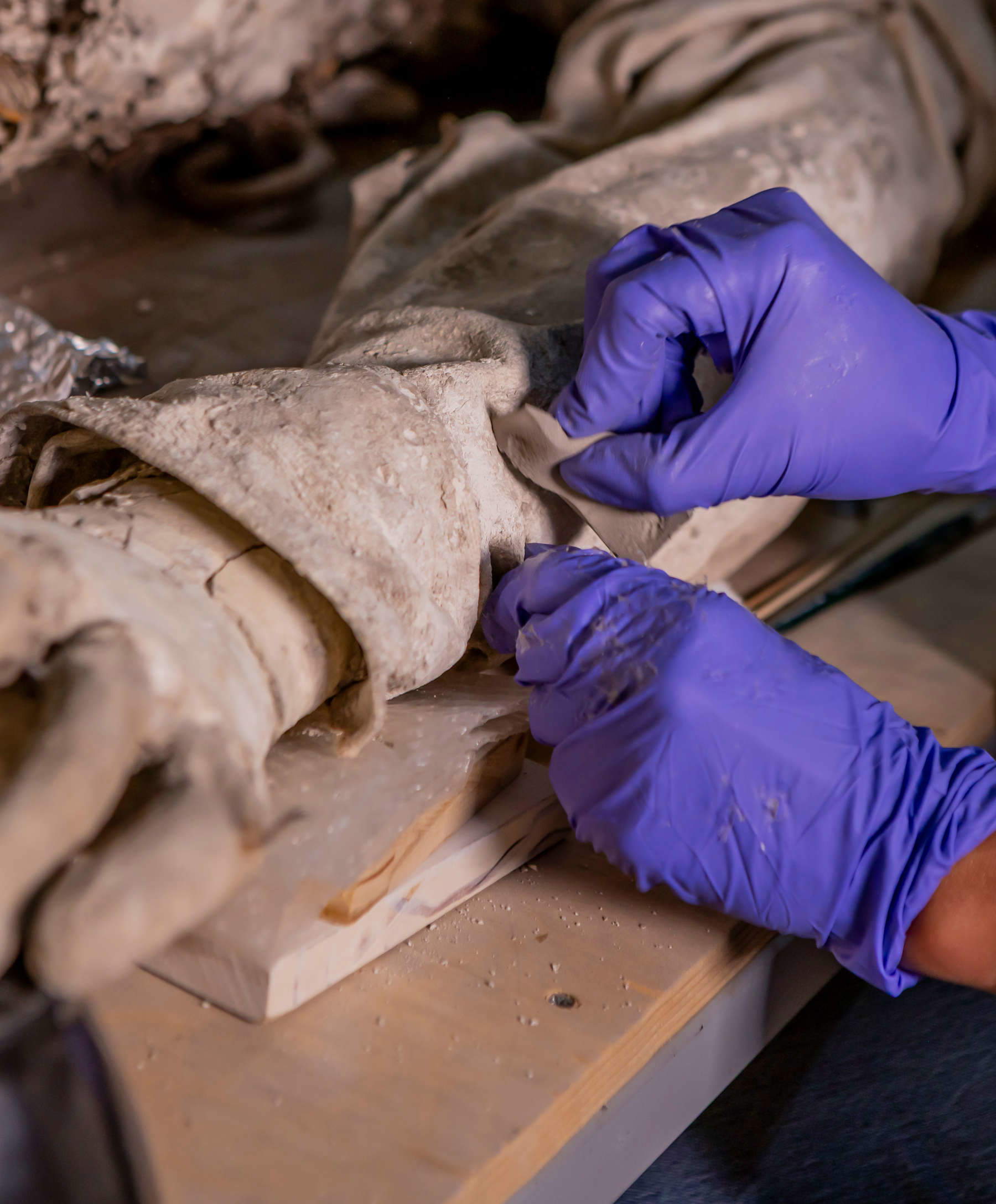
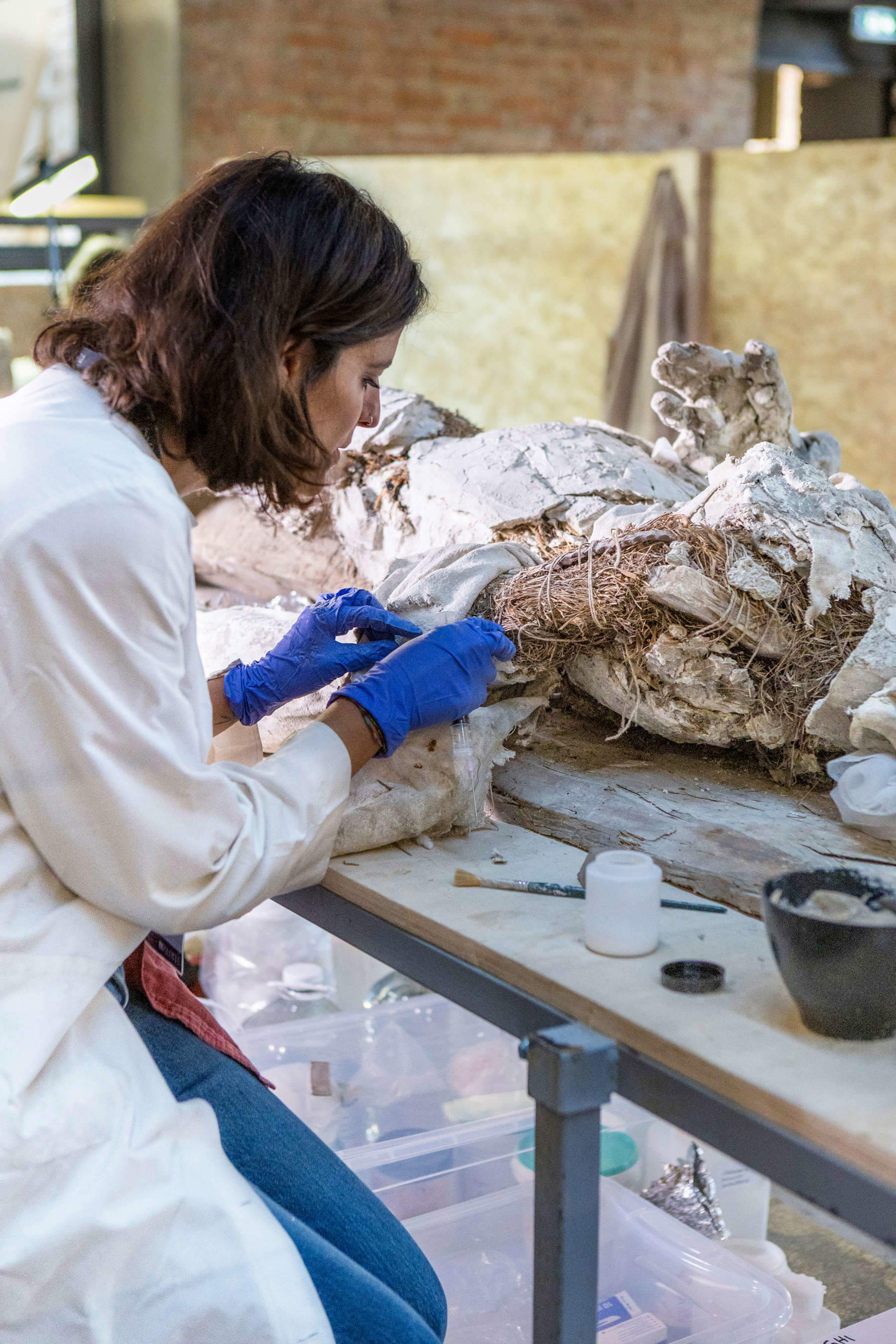
The six stucco works depict three bishops, two angels-perhaps identifiable as a Puttino and a Genietto-and a female figure with floral decoration on her chest. They were made in just five months in 1617 by Luca Reti and his workshop. This sculptural group had an allegorical and symbolic function, intended to represent the opposition between War and Peace, themes strongly present in the artistic language of the European Baroque.
The Teatro Farnese itself, an integral part of the Pilotta complex, is considered a masterpiece of Baroque architecture and stage design, with a significant artistic and cultural history. The sculptures, therefore, are not just objects of art, but historical testimonies that tell of the function and spirit of the theater in the early decades of the 17th century.
The 1944 bombing caused severe damage to these sculptures. Today, the works are in a fragmentary state, with two of them-an ensign and the female figure-never having been restored and are in a severely deteriorated condition. The other four, although they benefited from conservation work in the 1970s, now need a thorough overhaul of the display supports and integrated elements to ensure stability and safety. The complexity of this restoration also stems from the polymateric nature of the sculptures, made with techniques and materials that require specific skills and special attention to preserve the original features without altering their identity.
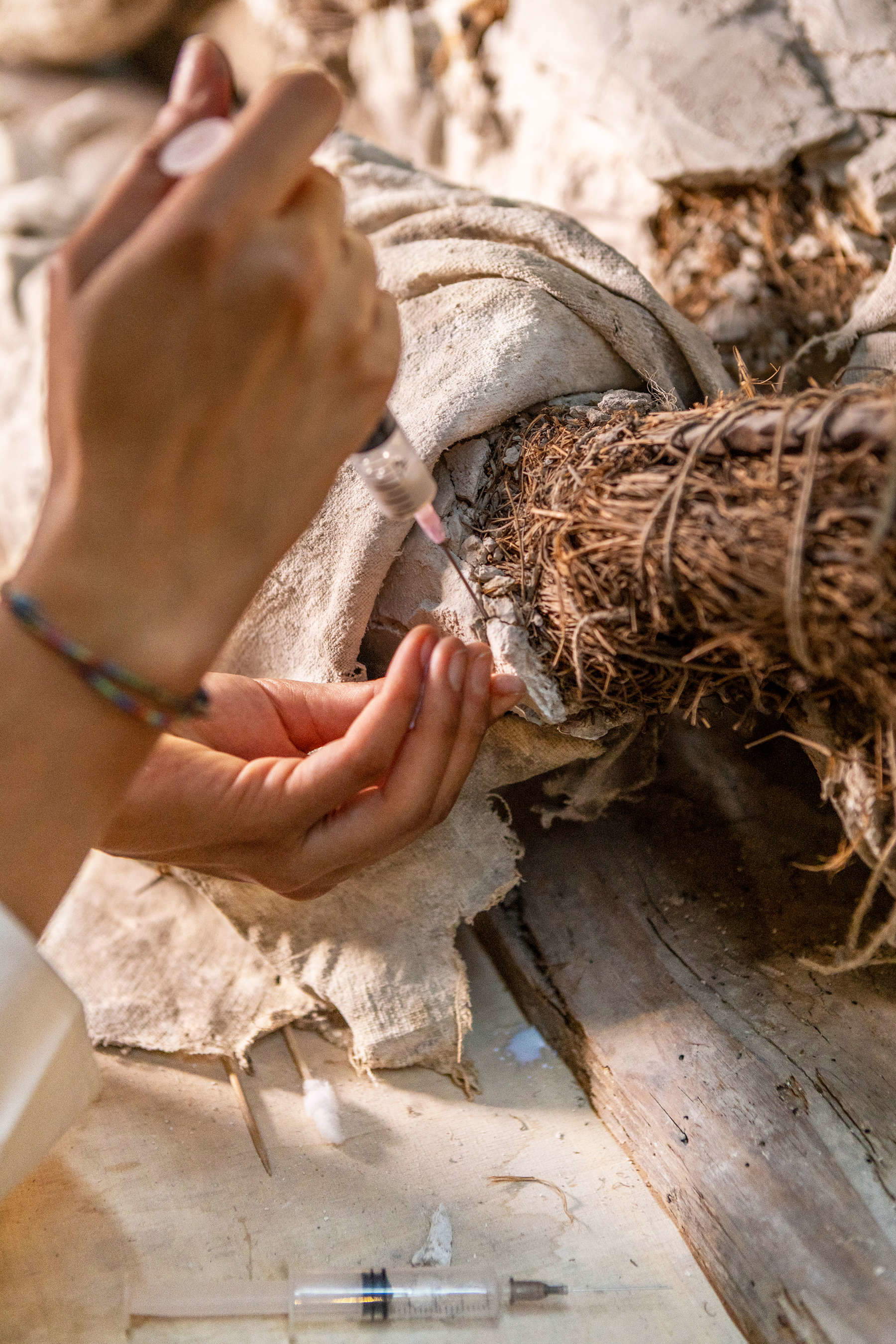
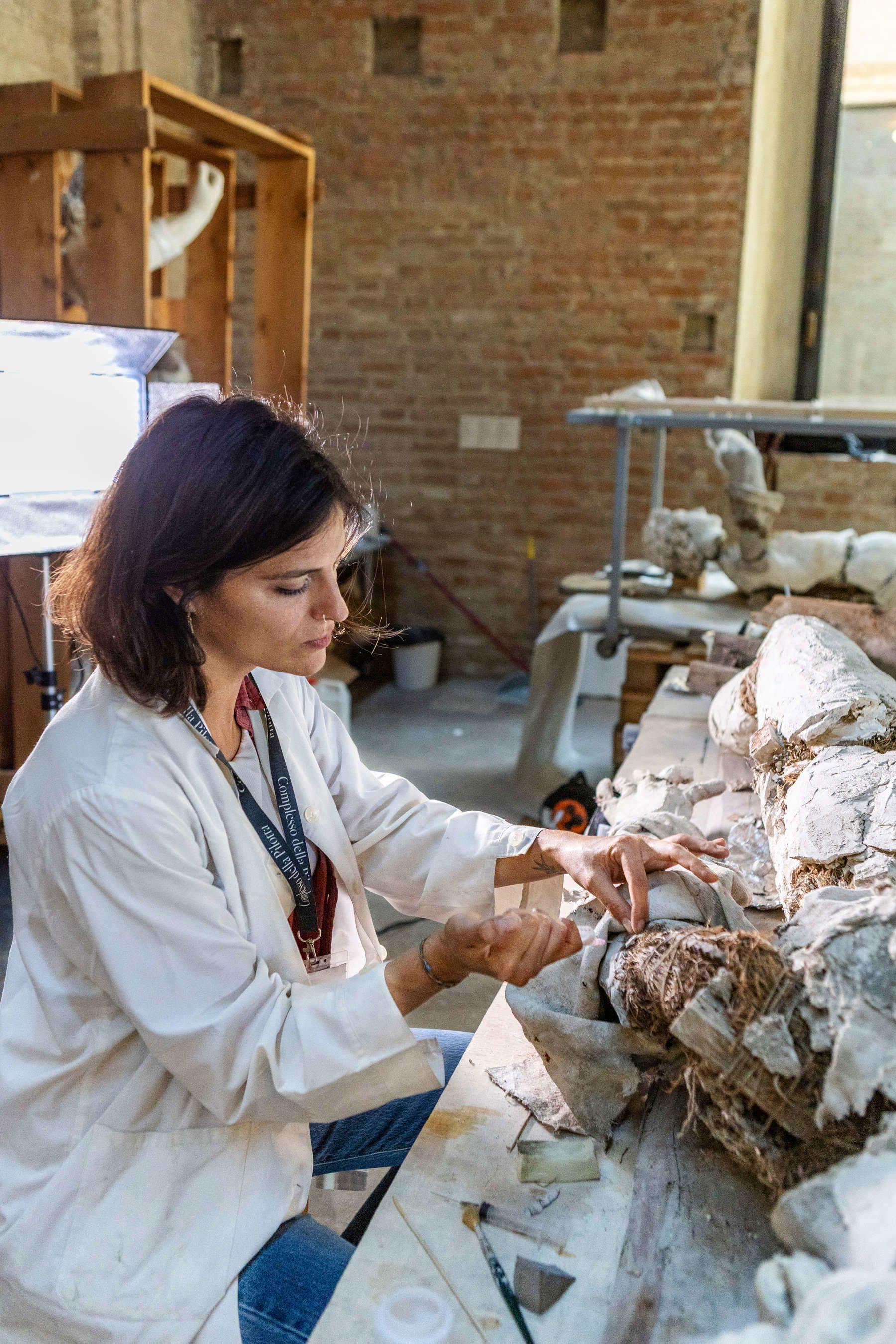
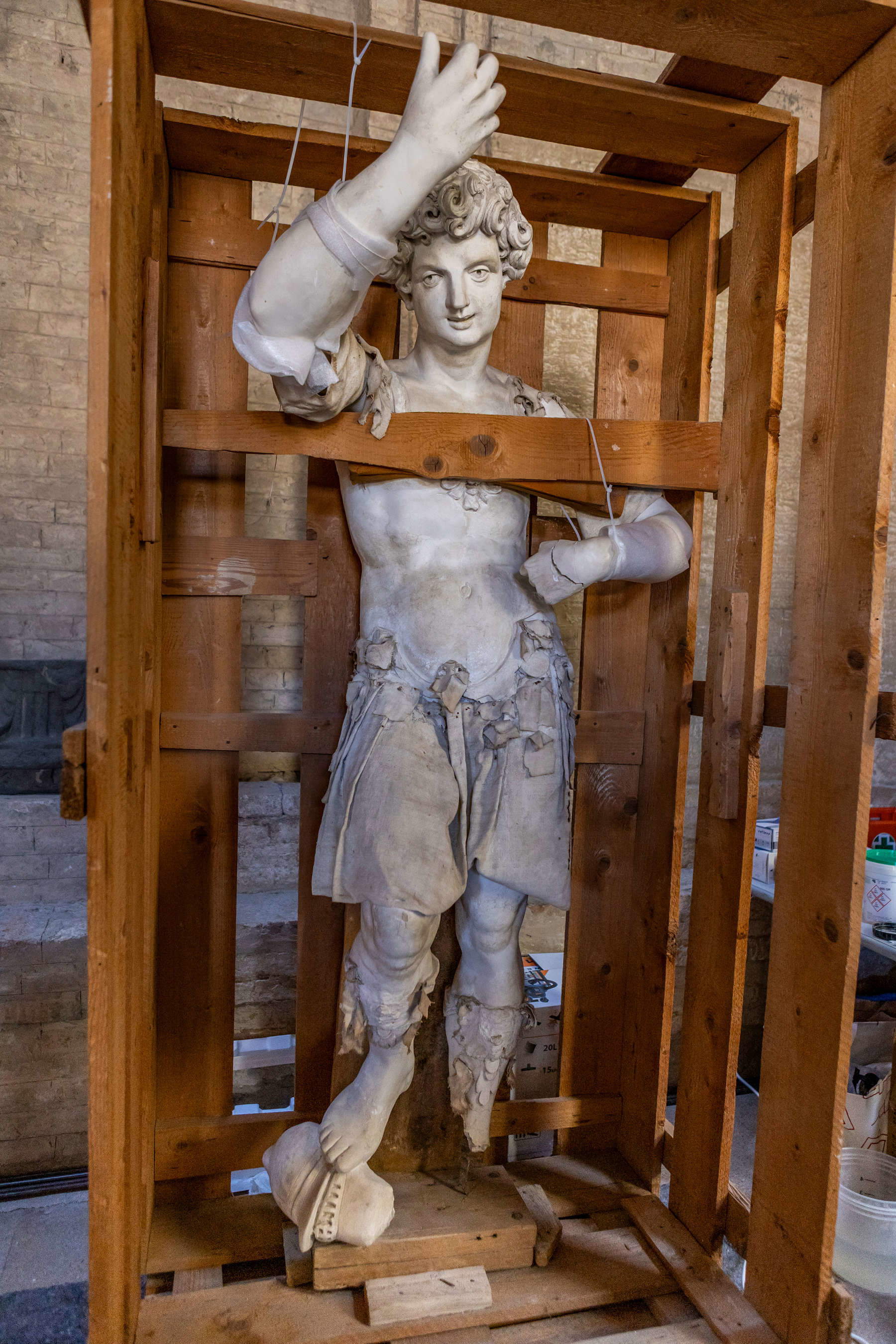
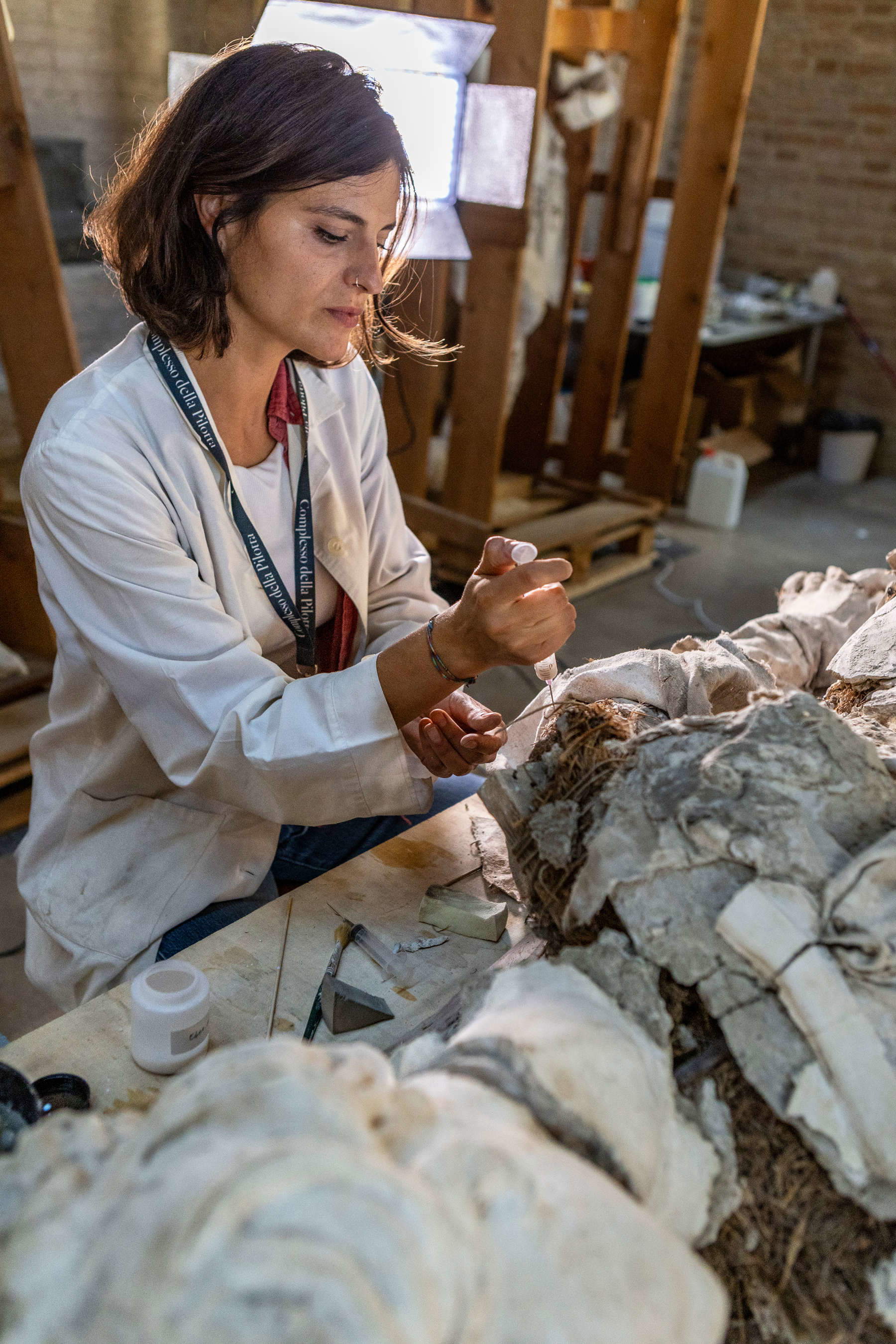
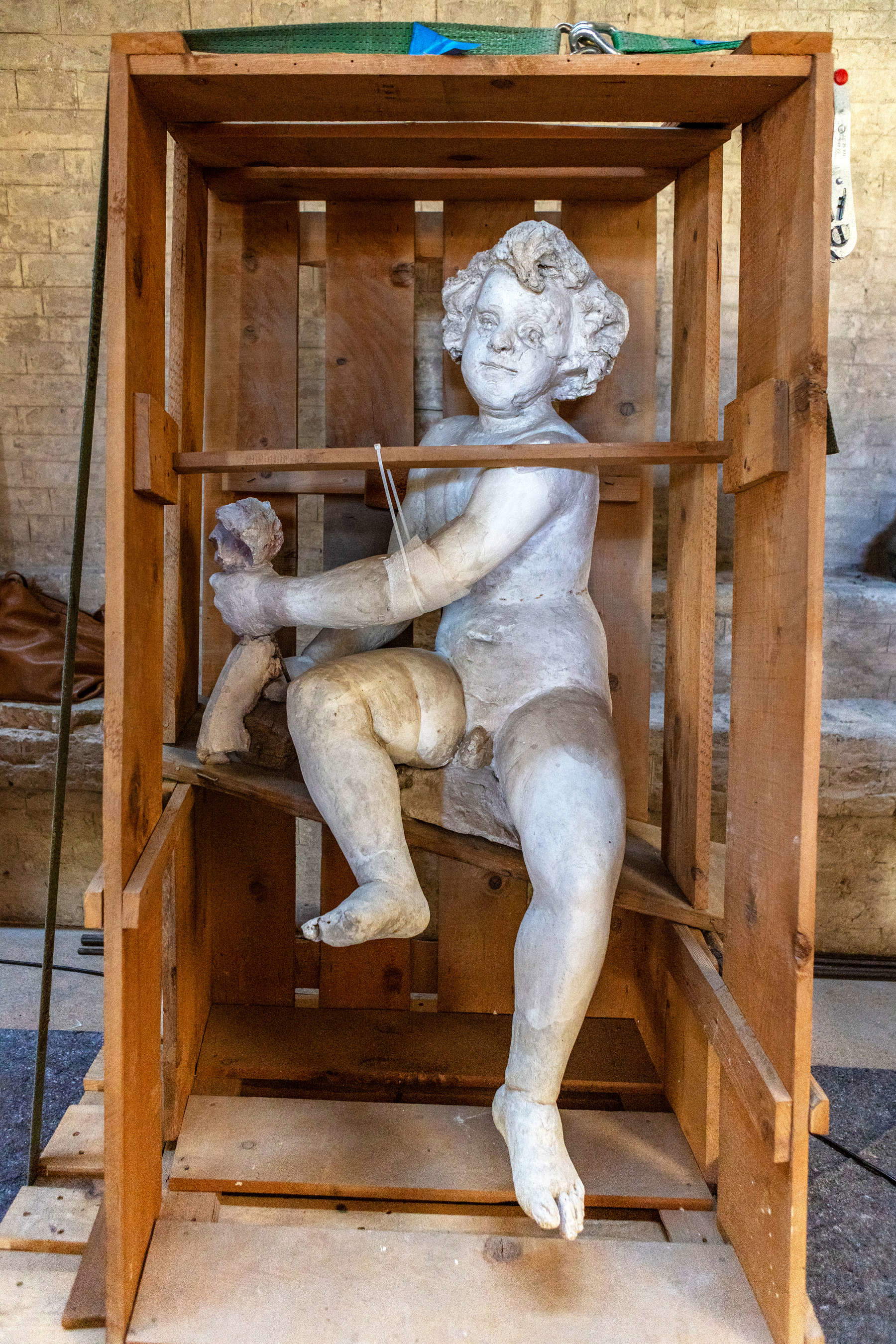
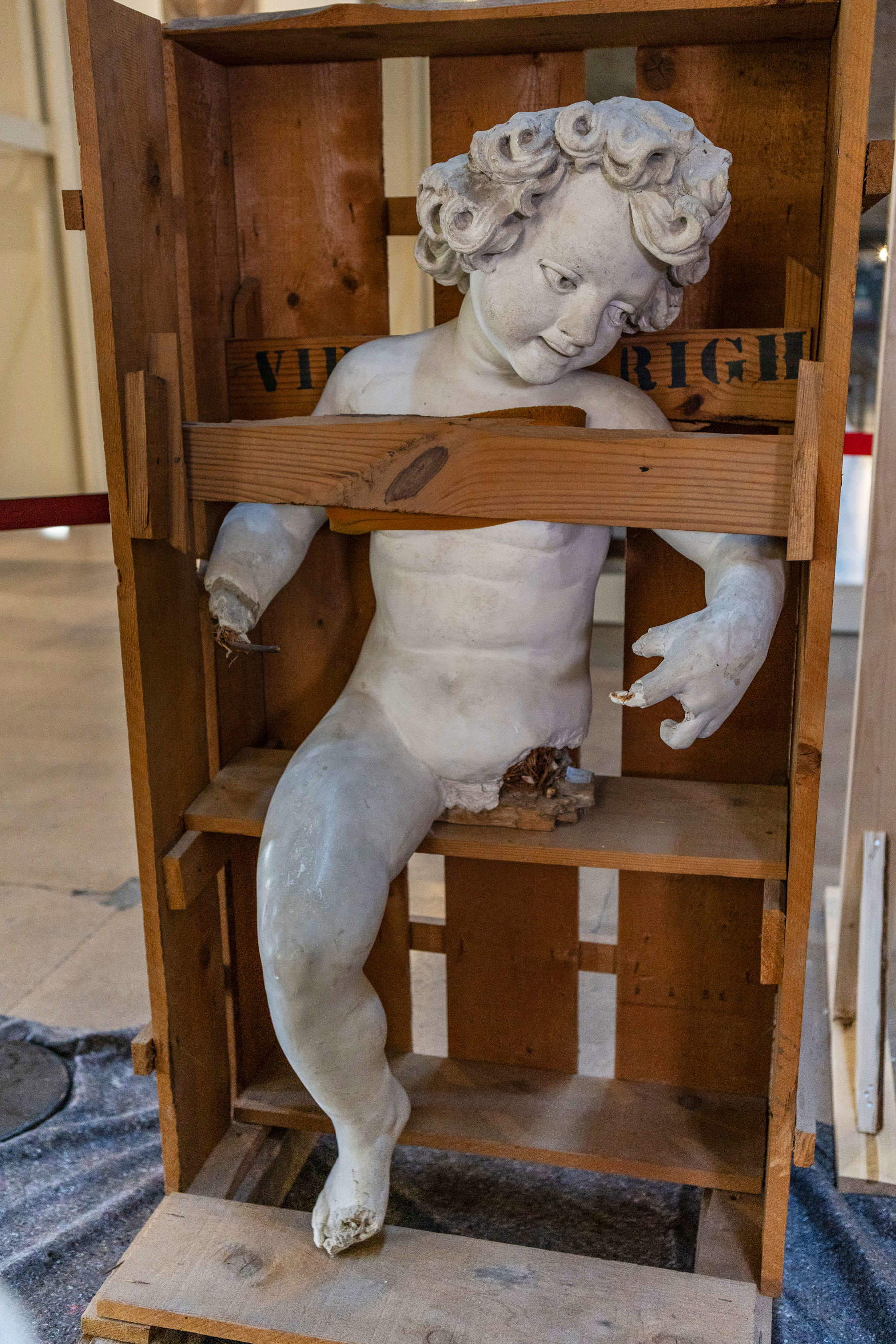

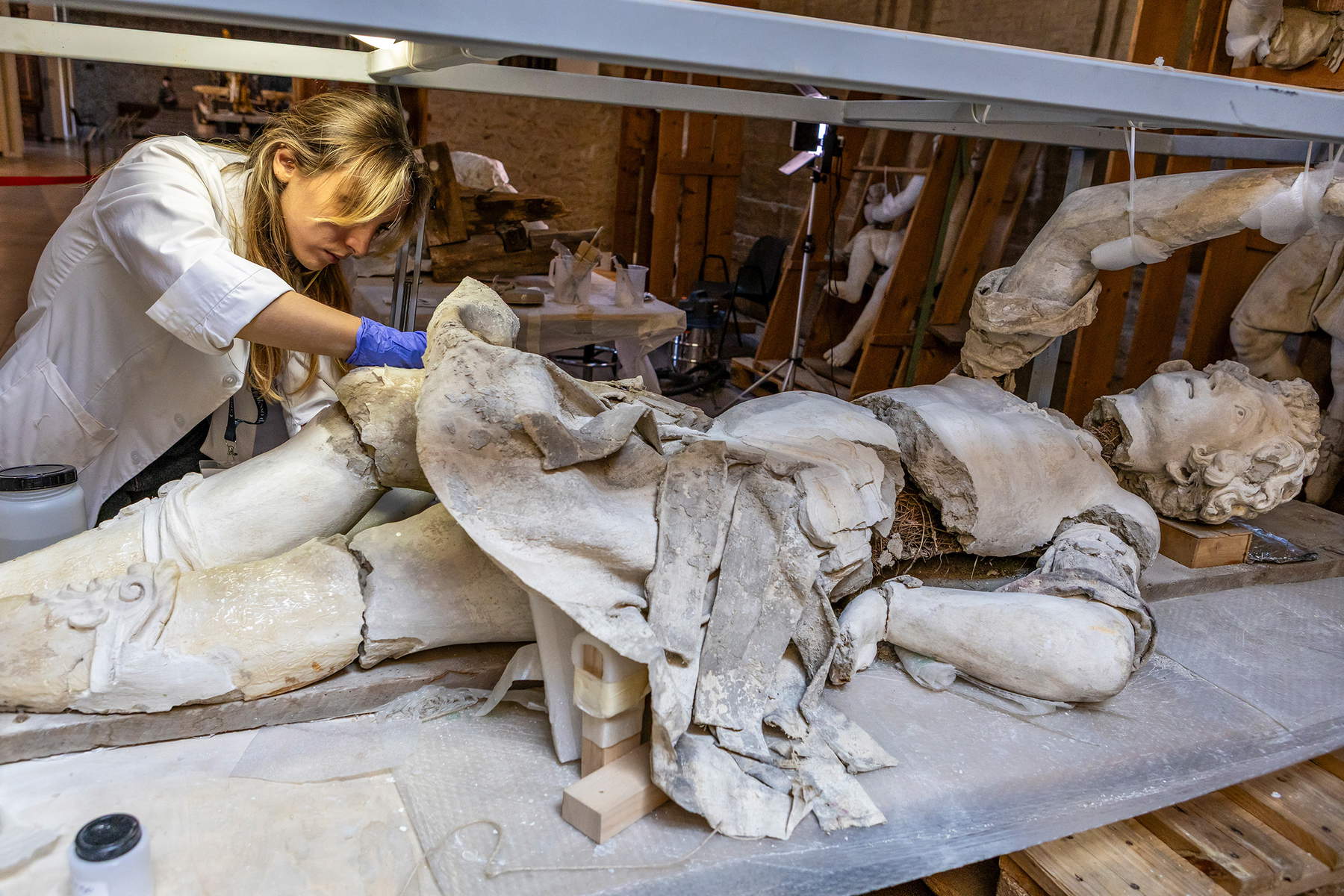
The restoration is entrusted to two experts, Elena Zichichi and Elena Russo, working under the direction of Gisella Pollastro. The process involves several steps: from securing the works to gentle cleaning, from structural consolidation to selective reintegration of missing or deteriorated parts. The main objective is to preserve the original materials as much as possible, respecting the original execution techniques. This approach makes it possible to maintain the historical and artistic authenticity of the sculptures, while ensuring their usability for future generations.
Parallel to the conservation work, the project includes innovative digital enhancement. The sculptures will be virtually relocated to their original position within a three-dimensional reconstruction of the Teatro Farnese. This 3D reconstruction not only faithfully reproduces the original environment, but is enriched by integrative models that hypothesize the original appearance of the works before their destruction. This will allow an immersive and accessible fruition, designed for a wide audience, with a strong educational and cultural value.
Since it is not possible to physically relocate the sculptures to their original location in the theater, the project aims to create a new permanent arrangement within the Pilotta exhibition itinerary, thus ensuring historical and cultural continuity in the narrative of the monumental complex. “Intervening on these sculptures,” says Gisella Pollastro, “means dealing with a fragile and complex material, marked by time and the violence of the 1944 bombing. It is not only a restoration work, but a gesture of responsibility towards a heritage that has gone through destruction, dispersion and forgetfulness. The works being restored today are what remains of a great stage set, part of the history of the Teatro Farnese and the city. Our intervention aims to recompose, as far as possible, not only the original forms, but also the historical and artistic context in which they were born. It is a work that combines scientific rigor and historical awareness: recovering these sculptures means continuing, after decades, that path of material and moral reconstruction started after the war, and taking a further step forward in the restitution of memory. It is a work that combines technical expertise and art-historical research and that today is also open to the public gaze: the construction site set up in the Hall of Triumph allows everyone to follow this process closely, through a dialogue between restoration, technology and historical narration. A way to reconnect people to the memory of places.”

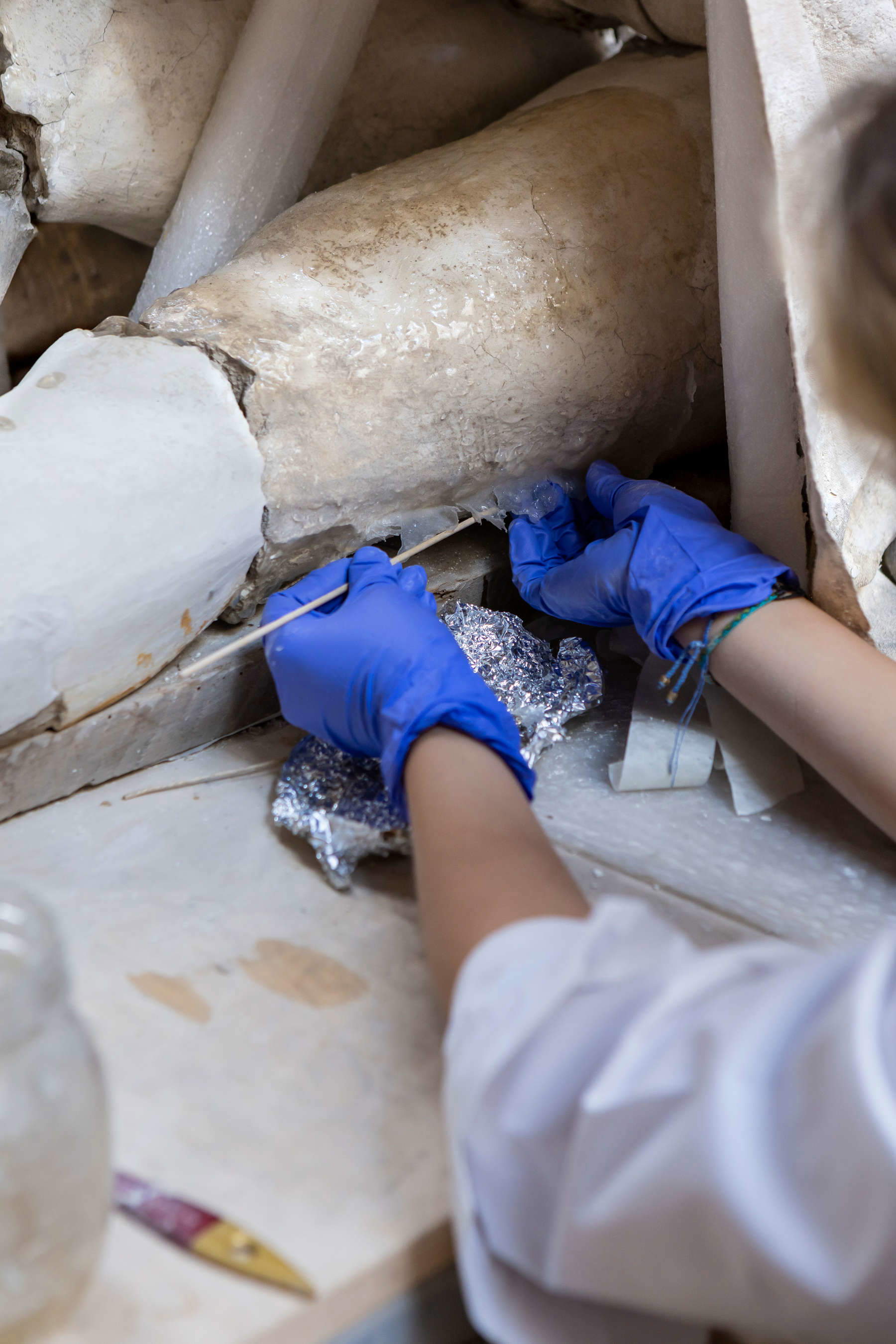
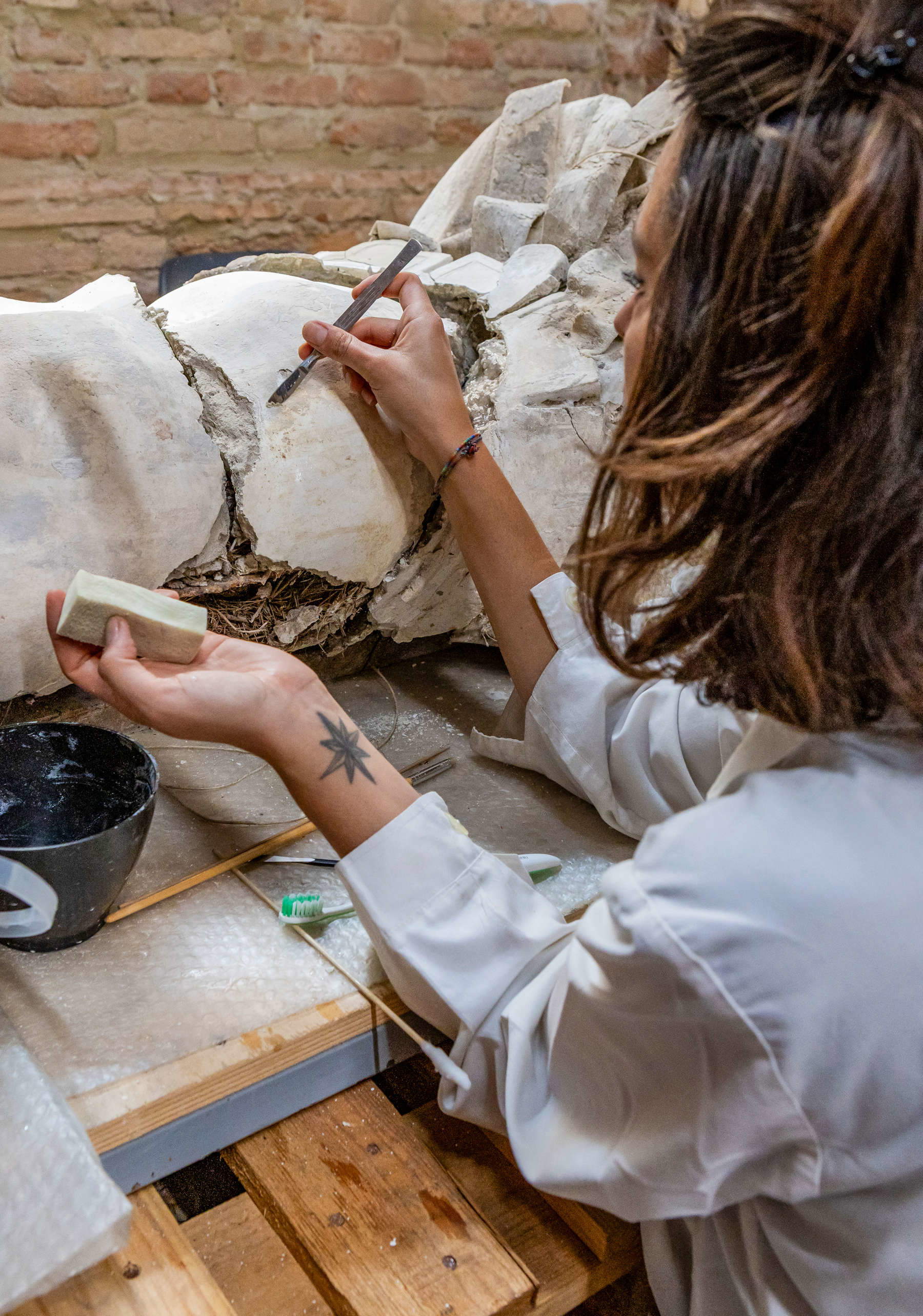
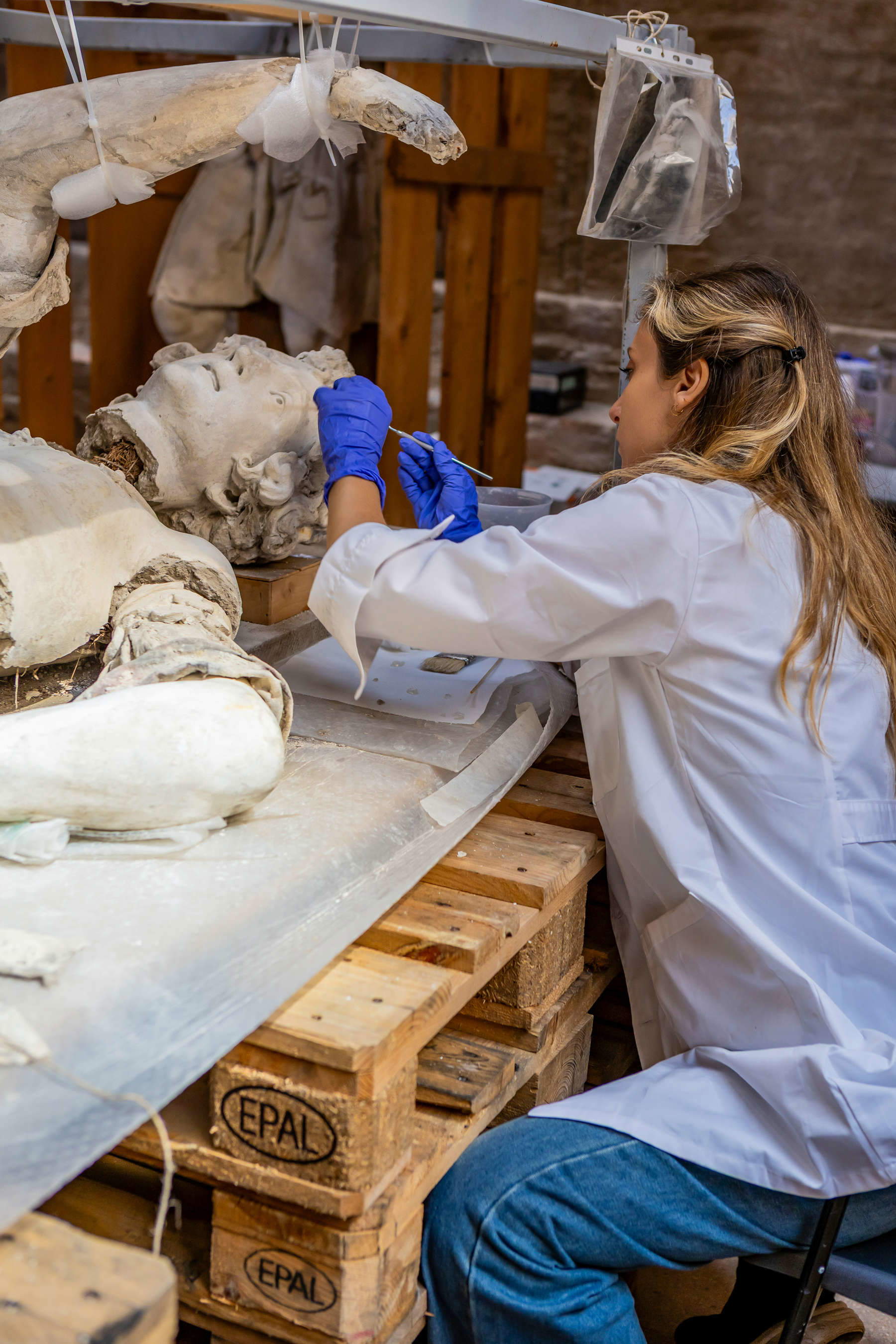
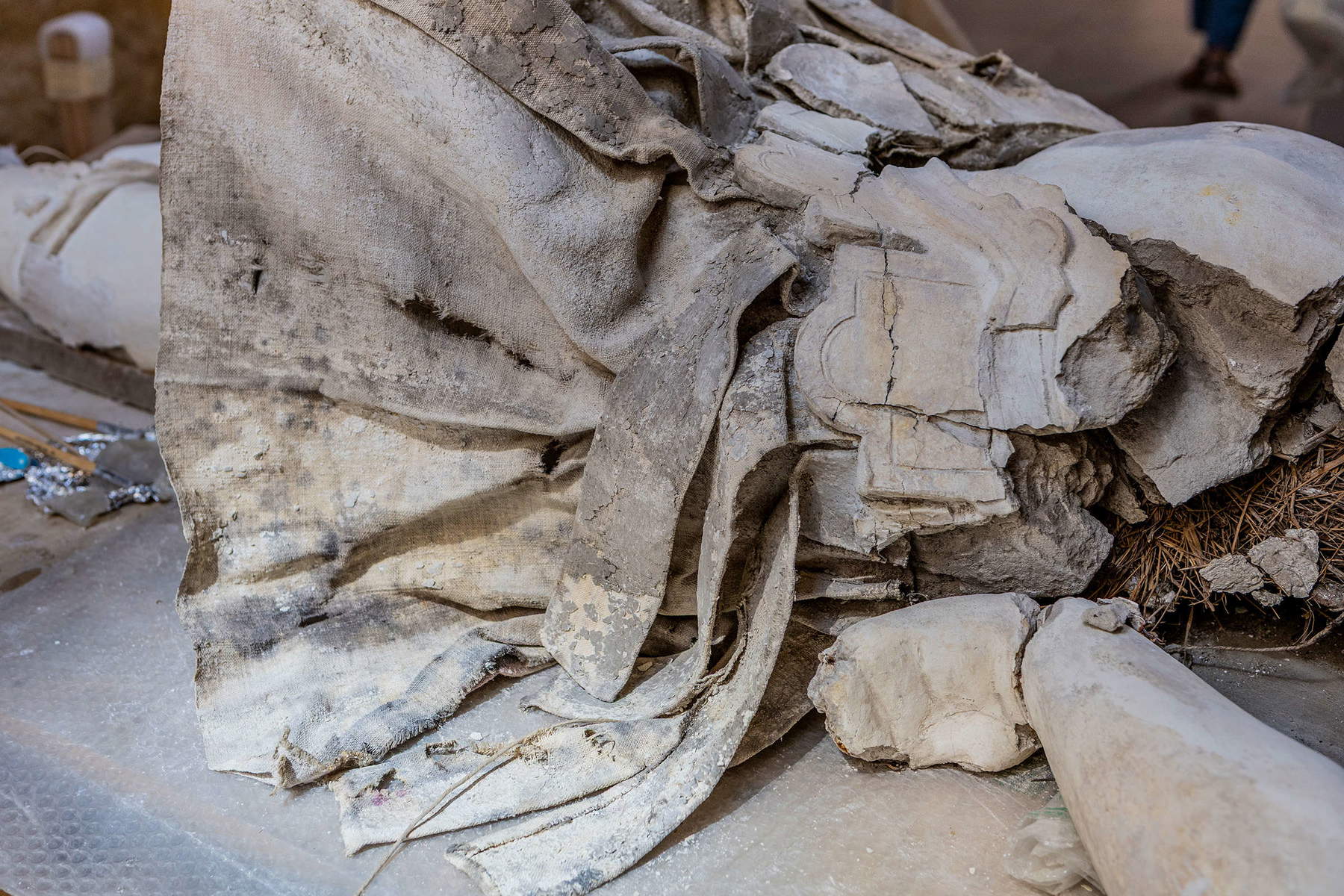
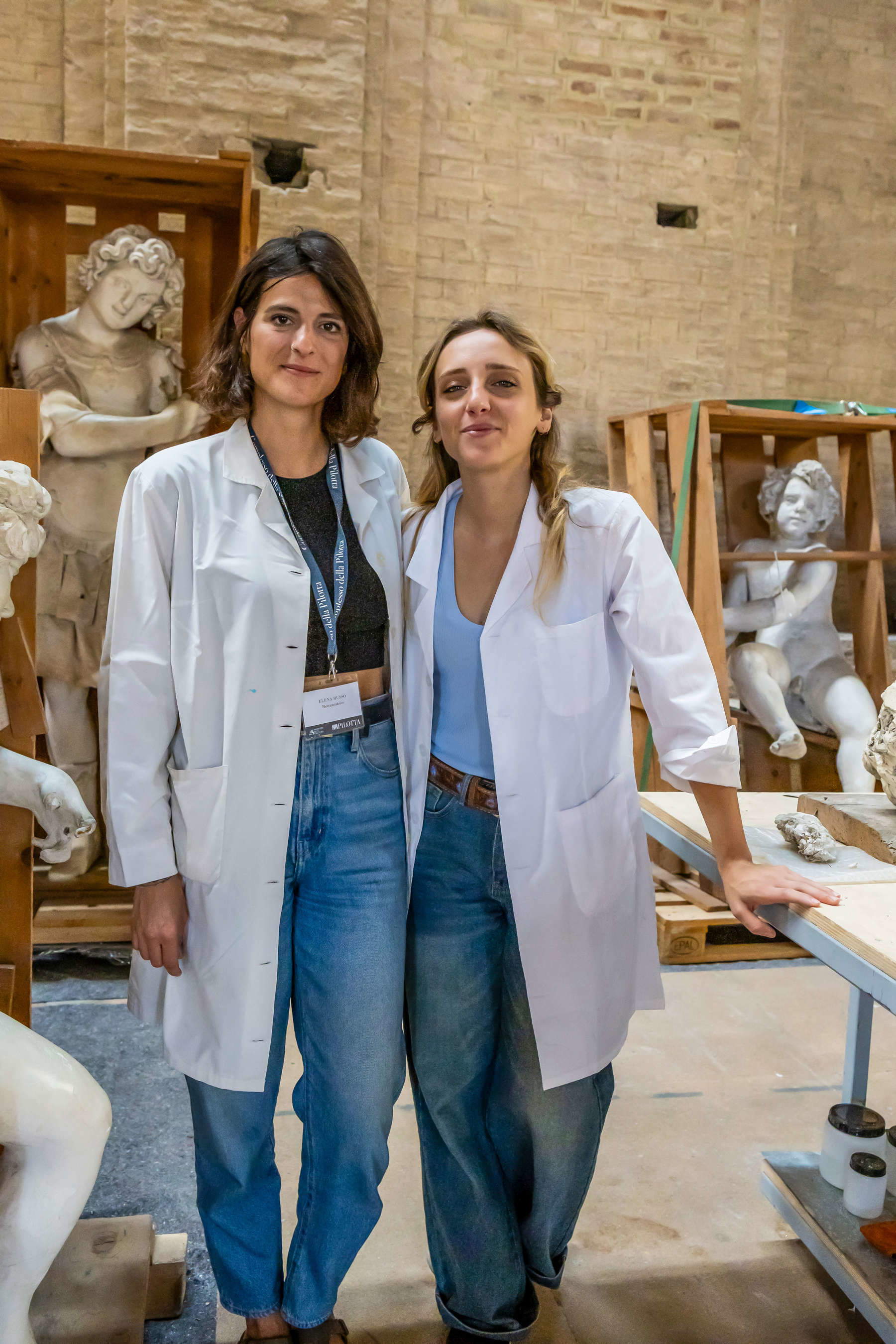

The financial and organizational support of the Isabel and Balz Baechi Foundation was decisive in the initiation and development of this intervention. The foundation, based in Switzerland, works in the field of protection and promotion of European and international cultural heritage, focusing on initiatives that enable the recovery and enhancement of valuable works of art and historical sites.
This project is a significant example of how collaboration between public agencies, expert conservators and private foundations can lead to important results in safeguarding artistic and cultural memory. The return of the sculptures to the public, through careful restoration and state-of-the-art digital enhancement, contributes to enriching the cultural offerings of Parma and its famous Complesso della Pilotta. “Supporting this project,” says Paola Potenza, head of restoration projects at the Isabel and Balz Baechi Foundation, “means reaffirming the value of culture as a space of responsibility, care and transmission. The sculptures of the Teatro Farnese, marked by time and history, speak to us not only of artistic excellence, but also of a memory to be reconstructed. Intervening on them today means preserving them while respecting their original material, but also restoring their deep meaning through innovative tools capable of making them readable and accessible again. It is in this interweaving of matter, technology and thought that heritage once again becomes a living space for collective reflection, capable of speaking to the present with depth and responsibility.”
After its inauguration in 1628, the Teatro Farnese was rarely used, mainly due to high costs and technical complexity. The space underwent a gradual decline, partly due to the social changes associated with the Enlightenment and the spread of modern melodrama. Despite its abandonment, the theater continued to arouse curiosity among Grand Tour travelers, who fortunately left written and graphic records of the place.
From 1867, the national government began a series of conservation efforts, culminating in the reopening of the theater in 1913. Of primary importance was the election of a Conservative Commission on July 12, 1879, aimed at preserving the theater in its entirety and of which Camillo Boito was chairman in 1883. From 1879 to 1883 a campaign was launched to restore the sculptures that decorated the proscenium, evidenced by a wealth of archival documentation. Instead, the restoration of the Farnese’s equestrian sculptures dates back to 1907.
In 1944, the Teatro Farnese was severely damaged by a bombing that destroyed most of the wooden structures and stucco statues. From 1956 to 1962, a campaign was launched to find, catalog and secure the surviving wooden structure and works, which consisted of lifting and sheltering the works at the foot of the stage and tiers of seats, resting on the wall or within temporary wooden supports. The present appearance of the theater is due to the restoration work that took place in those years aimed at reconstructing the architectural members, ensuring the recognizability of the wooden reintegrations. In 1970, the works were moved to storage in the warehouse under the stage in the supine position; transportation involved a change in the positions of the limbs and heads of all the works and the loss of some plastic and supporting elements. Finally, in 1978, there was the restoration of some of the works entrusted to a Bologna firm, which involved cleaning, consolidation, restoring the correct position of the works by reinforcing the nodal points of the metal framework, repositioning the original fragments, and reintegrating the missing elements with scagliola; the wooden support structure used in the early postwar period to keep the sculptures upright was employed.
 |
| Parma, restoration of six important baroque statues at Teatro Farnese begins |
Warning: the translation into English of the original Italian article was created using automatic tools. We undertake to review all articles, but we do not guarantee the total absence of inaccuracies in the translation due to the program. You can find the original by clicking on the ITA button. If you find any mistake,please contact us.